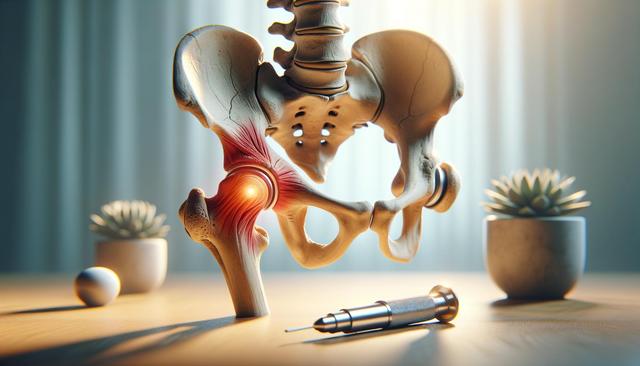Understanding the Causes of Hip Pain
Hip pain can stem from a variety of sources, and understanding the root cause is an important step toward effective relief. Common causes include arthritis, bursitis, tendonitis, muscle strain, and hip labral tears. For older adults, degenerative joint conditions are a frequent contributor. In some cases, hip pain may also radiate from the lower back, making diagnosis more complex. Identifying the exact cause often requires a physical exam and imaging tests such as X-rays or MRIs performed by a healthcare professional. Knowing the underlying reason for your discomfort can help guide the right treatment plan, whether it’s a short-term injury or a chronic condition requiring long-term care.
Recognizing symptoms like stiffness, reduced range of motion, or pain that worsens with activity can also help narrow down the type of hip issue you’re experiencing. If the pain persists for more than a few weeks or interferes with daily activities, seeking medical advice is highly recommended.
Home Remedies and Lifestyle Adjustments
There are several at-home options that can provide meaningful relief from hip pain. These can be especially helpful for those experiencing mild to moderate discomfort or looking for supportive measures to complement clinical care. Applying ice or heat to the affected area can reduce inflammation and ease stiffness. Over-the-counter anti-inflammatory medications may offer temporary relief, but should be used carefully and under guidance if taken long-term.
Certain lifestyle changes can also help minimize strain on the hip joint:
- Maintaining a healthy weight to reduce pressure on the hips
- Incorporating low-impact exercises, like swimming or cycling
- Using supportive footwear to improve alignment
- Practicing proper posture when sitting or standing
Some individuals may also find benefit in using hip pain relief products for older adults, such as ergonomic chairs, supportive cushions, or assistive walking aids. These tools can lessen the load on joints and improve daily comfort.
Physical Therapy and Targeted Exercises
One of the most effective hip pain relief methods includes working with a licensed physical therapist. Physical therapy for hip pain relief focuses on strengthening the muscles around the hip, improving flexibility, and restoring mobility. A tailored exercise plan can address muscle imbalances and reduce pressure on the joint, ultimately helping to prevent future flare-ups.
Common exercises in physical therapy may involve:
- Gentle stretching to improve hip flexibility
- Strength training for the glutes, thighs, and core
- Balance and stability exercises
- Range-of-motion movements to maintain joint health
Physical therapists also teach proper body mechanics to minimize stress on the hips during everyday activities. This kind of preventative care is particularly important for individuals managing chronic conditions like osteoarthritis. When done consistently, physical therapy can play a key role in long-term recovery and pain management.
Supportive Devices and Non-Surgical Interventions
For individuals who experience ongoing discomfort, non-surgical treatment for chronic hip pain may provide sustained relief without the need for invasive procedures. One helpful approach includes the use of supportive devices such as braces and compression wraps. Many people choose to order hip support brace for arthritis to stabilize the joint and reduce inflammation during movement.
Other non-surgical options include:
- Injections such as corticosteroids to reduce inflammation
- Platelet-rich plasma (PRP) therapy that uses the body’s own cells
- Chiropractic care or acupuncture for pain modulation
- Assistive devices like canes or walkers to reduce weight-bearing stress
These interventions can be used alone or in combination with physical therapy, depending on the severity of the condition. Consulting with a healthcare provider is essential to determine which options are safe and appropriate for your specific situation.
When to Seek Medical Attention
While many cases of hip pain can be managed at home, it’s important to recognize when professional evaluation is necessary. Persistent pain that does not improve with rest, worsening symptoms, or signs of infection (such as fever and redness) should be addressed by a specialist. Orthopedic physicians can perform diagnostic tests to assess the joint and recommend advanced care if needed.
In cases where conservative treatments fail to provide relief, minimally invasive procedures or surgery may be considered. However, many individuals successfully manage their condition with a thoughtful combination of approaches, including the use of hip pain relief products for older adults and participation in guided rehabilitation programs. The key lies in early intervention and a willingness to explore the most effective hip pain relief methods tailored to one’s needs.
Conclusion: Taking Control of Hip Health
Hip pain can significantly disrupt daily life, but a well-rounded approach can offer meaningful and lasting relief. From physical therapy for hip pain relief to choosing to order hip support brace for arthritis, there are many supportive solutions available. Non-surgical treatment for chronic hip pain should not be overlooked, especially for those seeking to avoid more invasive options. By combining at-home strategies, professional guidance, and appropriate hip pain relief products for older adults, individuals can find comfort and regain mobility. Always consult a healthcare provider to determine the most effective hip pain relief methods based on your condition, and take proactive steps to maintain healthy joint function over time.




Leave a Reply